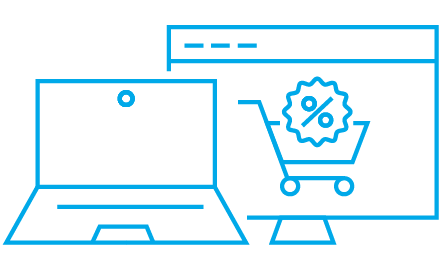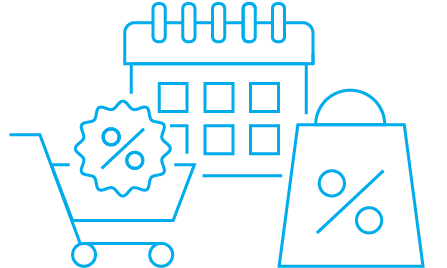-
Data curation connects the right audiences with the right ad inventory in one ready-to-run deal.
-
It cuts ad waste and improves ROI by preselecting high-quality environments and high-intent audiences.
-
Curators work only with consented data and enforce privacy, consent, and brand-safety rules.
-
They score audience cohorts (intent, recency, demographics) and inventory quality (suitability, viewability, fraud risk).
-
One curated deal ID makes activation faster and simpler across multiple DSPs.
-
Performance data constantly feeds back, so deals are updated and improved without rebuilding targeting from scratch.
-
Advertisers, agencies, publishers, and users all benefit from more relevant, safer, and more effective advertising.
- Summary:
- What Is Data Curation?
- How Does Data Curation work?
- What Are The Steps of The Data Curation Process?
- Why is Data Curation Important?
- Who is a Data Curator?
- What is the Role of Data Curators?
- Why is There a Need for Data Curators?
- Who Benefits from Data Curation?
Summary:
What Is Data Curation?
Data curation is the process of choosing, organizing and validating the maintenance of data in a continuous manner, so the date is accurate, usable and trustworthy.
In AdTech, data curation means the practice of connecting the right audiences with the right inventory (sites, apps and formats) into ready to run deals for agencies and brands.
Partnering with a data curator maximizes performance, cuts ad waste, sharpens precision, and lifts ROI and overall campaign results.
Working with a data curator saves time and manual effort by removing the need to sift through thousands of sites and data segments. The curator preselects high-performing environments and audience signals so ads reach the right people, in the right places, at the right time.
Looking for Data Curation?
How Does Data Curation work?
Data curation works by gathering consented audience data and inventory information, then scoring both to link user cohorts (by intent and recency) with the right sites, apps, and placements for enhanced performance, quality and brand safety.
As performance data flows back, the curator continuously refines cohorts, frequency caps, and inventory routes, so the same deal improves against KPIs without rebuilding targeting from scratch.
What Are The Steps of The Data Curation Process?
Data curation begins by collecting consented audience signals and inventory information, then standardizing them into a consistent format.
- compliance and brand-safety teams get the transparency and auditability they need.
Choosing the right data curator enforces privacy rules, consent status, and brand-safety guidelines.
Why is Data Curation Important?
Data curation matters because it connects high-signal audiences with precisely selected inventory before a single impression is bought.
This reduces waste, improves accuracy, and turns privacy and brand suitability.
It also simplifies operations by presenting complex data and inventory as ready-to-run, versioned deals that can be continuously tuned to the KPI.
Want to learn more?
Who is a Data Curator?
A data curator is the technology partner responsible for assembling, governing, and packaging audience and inventory signals into compliant, high-performance deals. They maintain quality over time, monitor outcomes, and refresh packages as signals, inventory, or policies evolve.
OnAudience is a full-stack data curator that has its own data technology that combines proprietary audience data and accurate inventory management to deliver one deal ID across all DSPs and enhance campaign performance.
What is the Role of Data Curators?
Data curators transform raw data signals into usable audience intelligence: they engineer and normalize data, design and score audience sets and verify inventory quality and paths.
They enforce privacy, consent, and brand-safety standards, document data lineage, and publish deals with clear activation guidance.
During activation, they monitor performance and iterate the package so results improve without requiring buyers to rebuild targeting from scratch.
Why is There a Need for Data Curators?
The digital ad ecosystem is fragmented across identities, platforms, and supply paths, and quality varies widely from one dataset or inventory source to another.
Regulations and brand-safety expectations demand consistent enforcement and traceability, while teams face heavy operational loads and rising outcome pressure.
Data curators address these challenges by delivering compliant, KPI-tuned packages that are easier to activate and more reliable to scale.
Curators profile and score audience cohorts by demography, interest, purchase intent and recency, while evaluating inventory quality across sites, apps, and formats for suitability, viewability, and fraud risk.
The approved audiences and inventory are packaged into ready-to-activate deals with clear information for more precise audience targeting, then launched in the DSP.
As the campaign runs, performance data feeds back into the package, prompting updates to cohorts, allow/block lists, frequency caps, and supply routes, and new versions are released as signals change.
Check how to curate campaigns
Who Benefits from Data Curation?
- Advertisers and brands: benefit from higher-quality reach, less wasted spend, and stronger ROI.
- Agencies and traders: gain faster setup and clearer governance, because curated deals replace large site lists and fragmented segments.
- Publishers and SSPs: see better demand matching for quality inventory, which can improve yield.
- Consumers and users: receive more relevant ads in safer contexts, with fewer interruptions, less data leakage, and stronger privacy controls.



